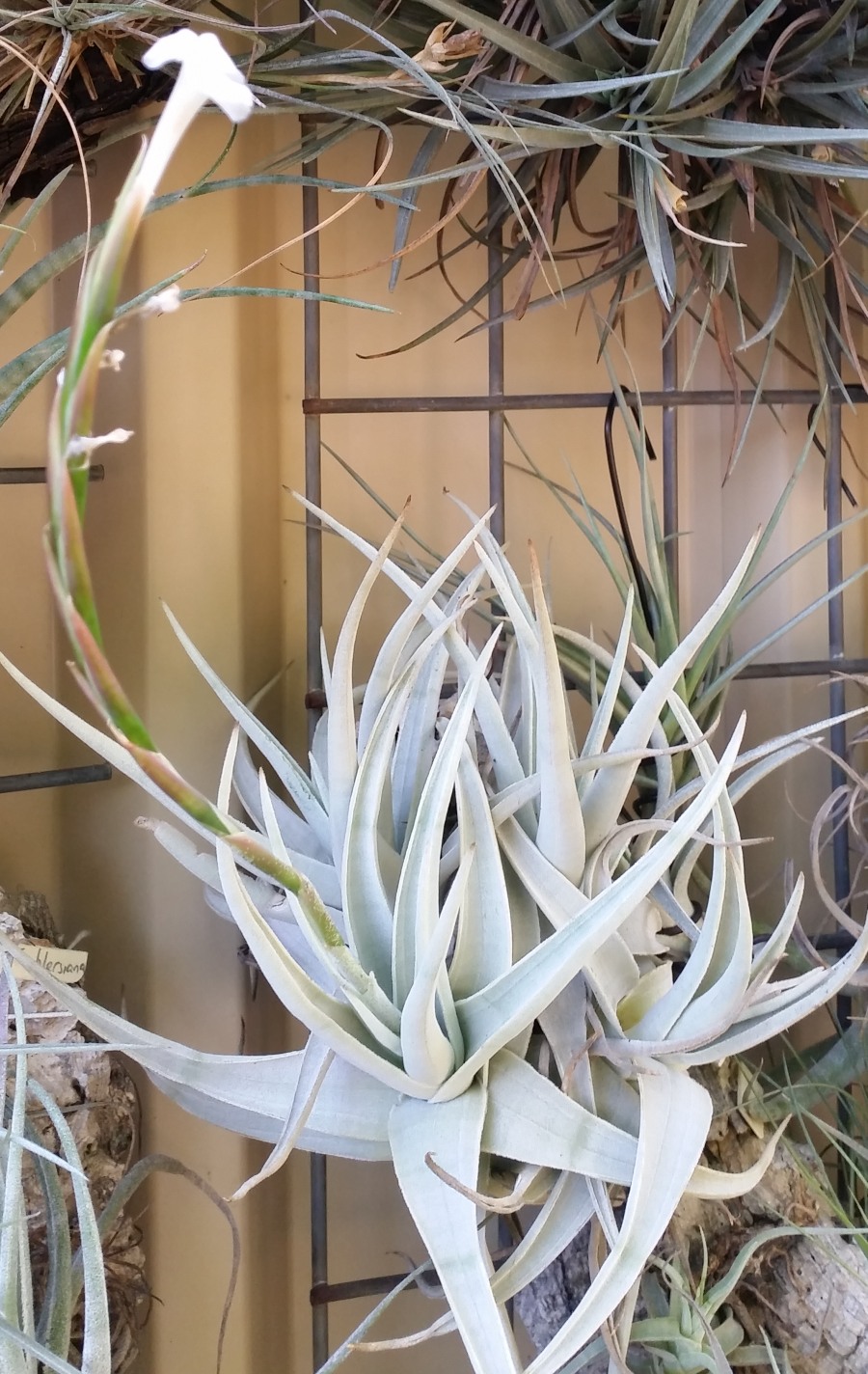
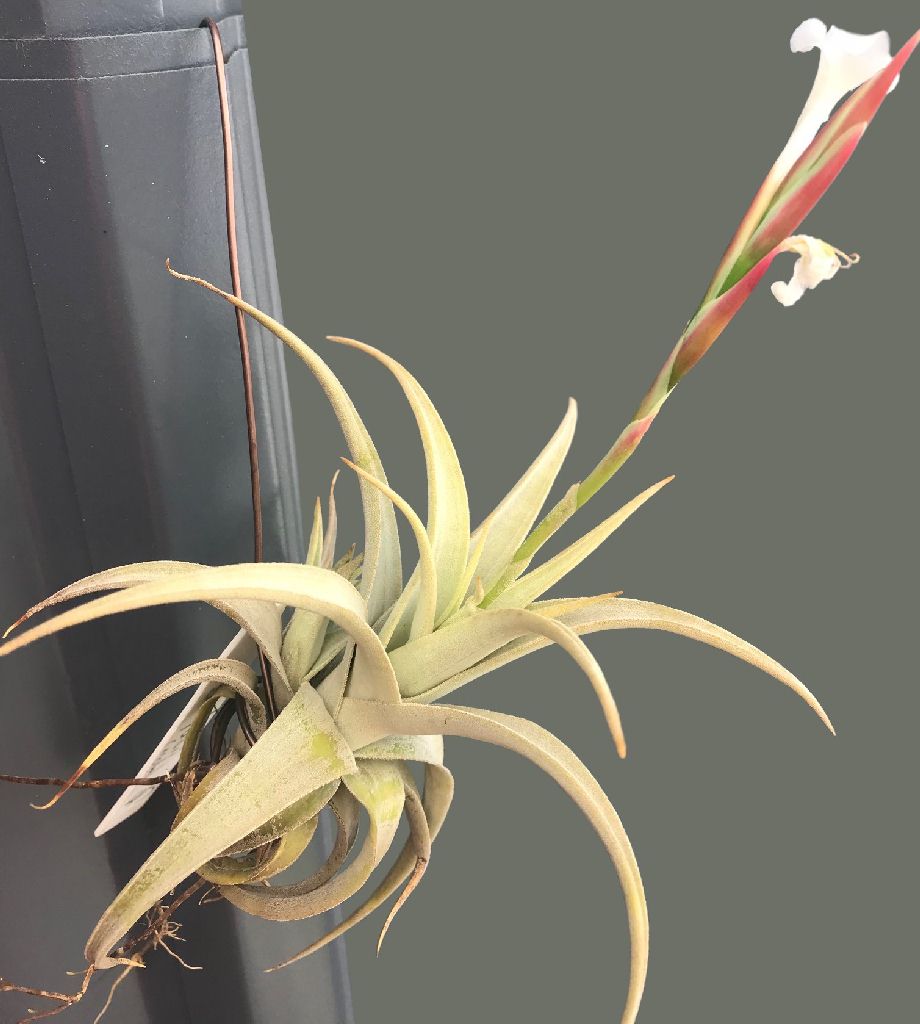
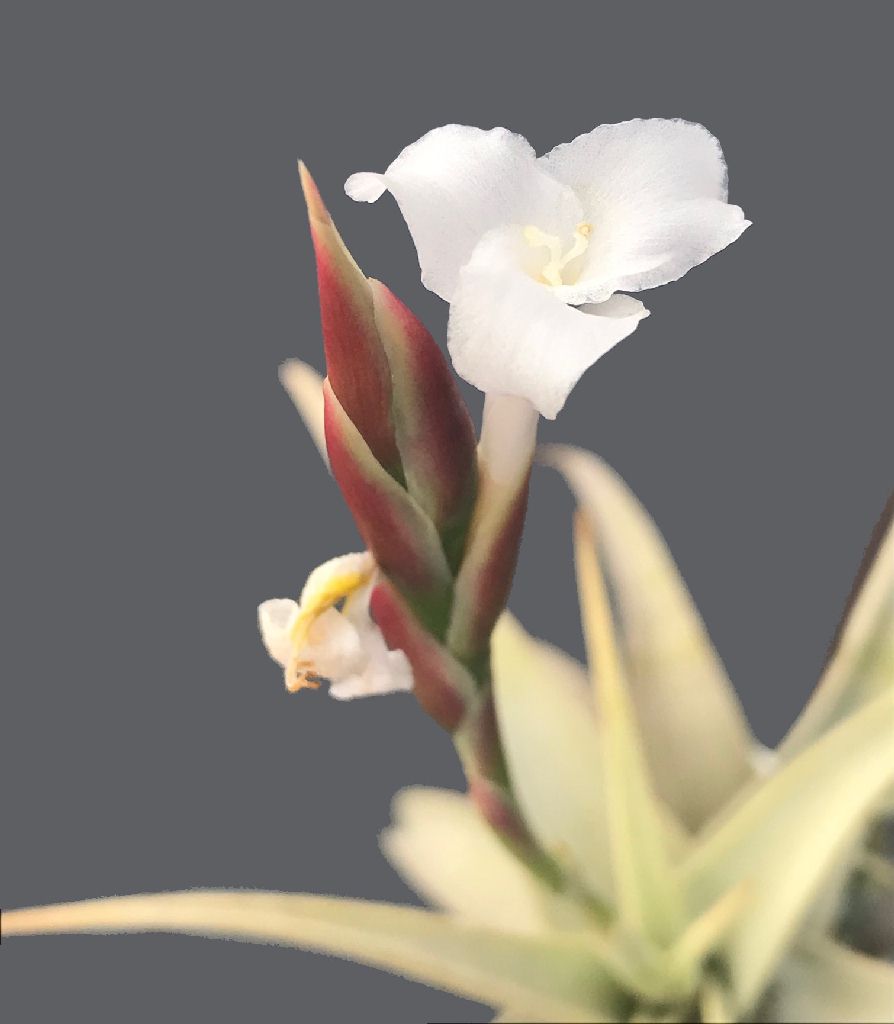
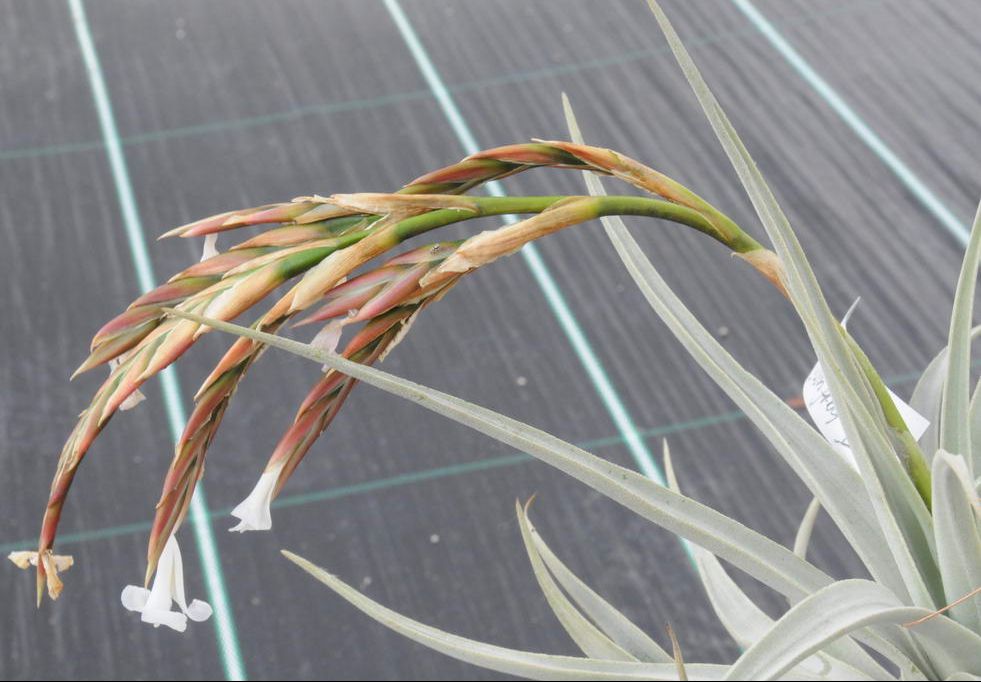
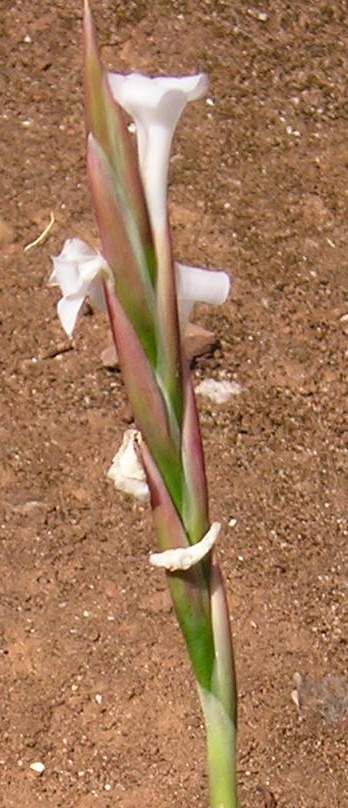
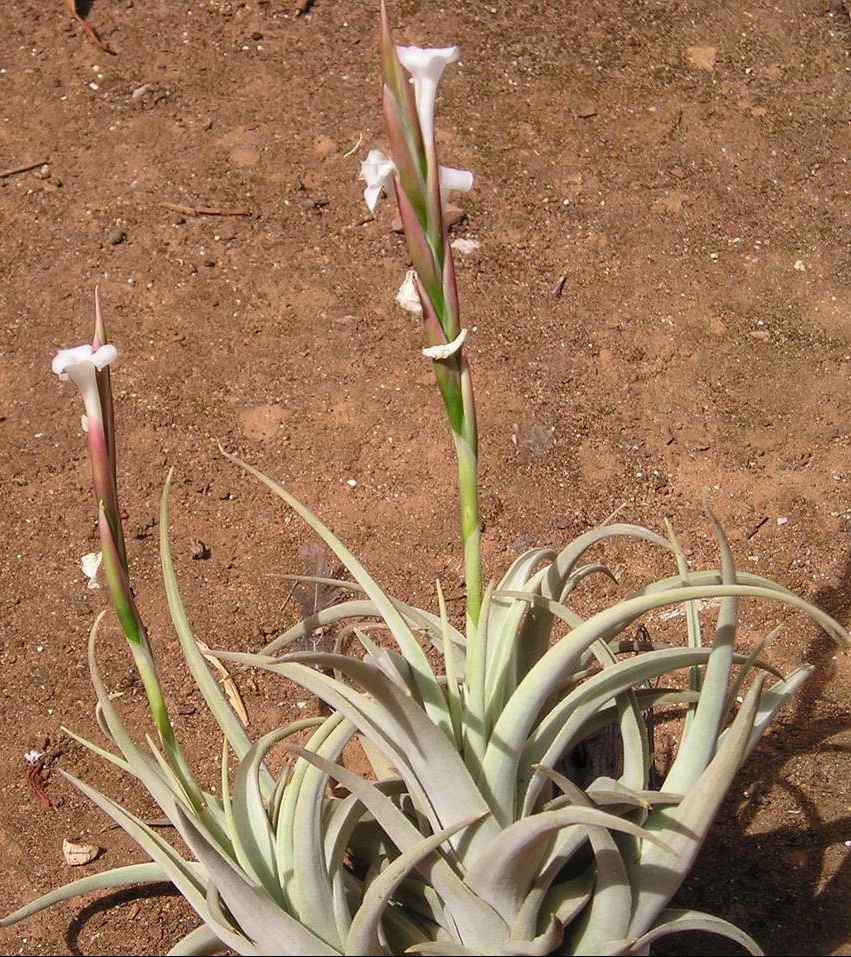
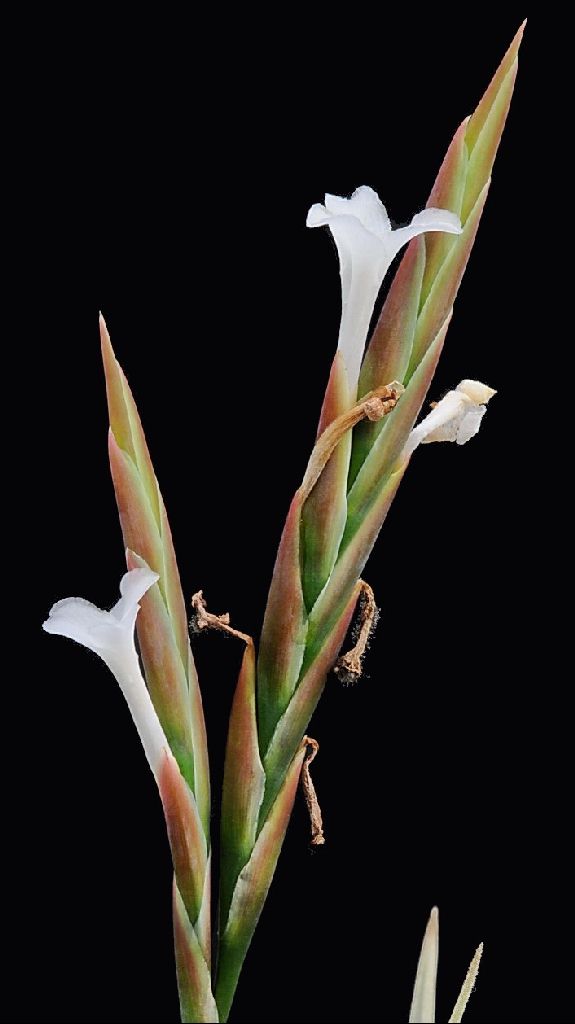
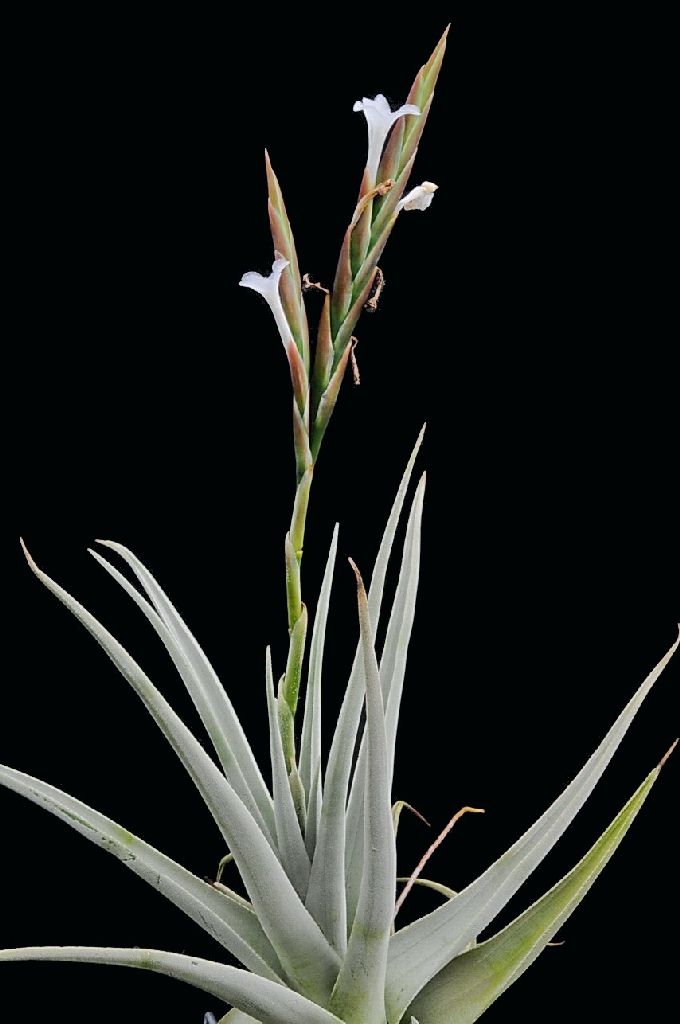
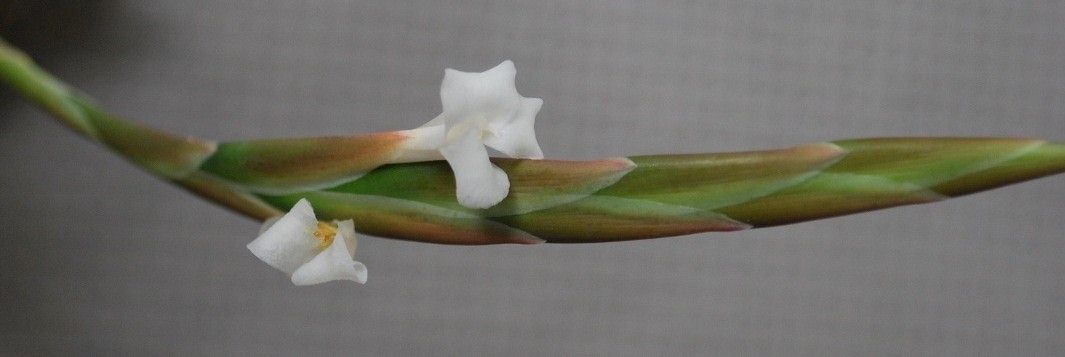
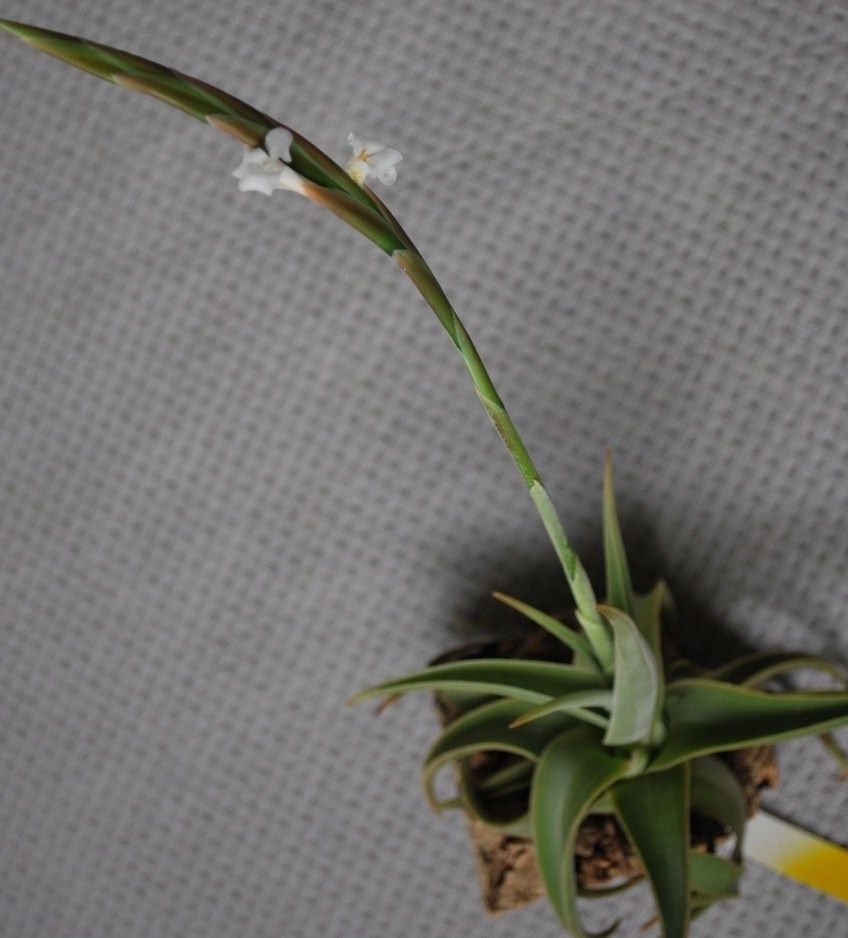
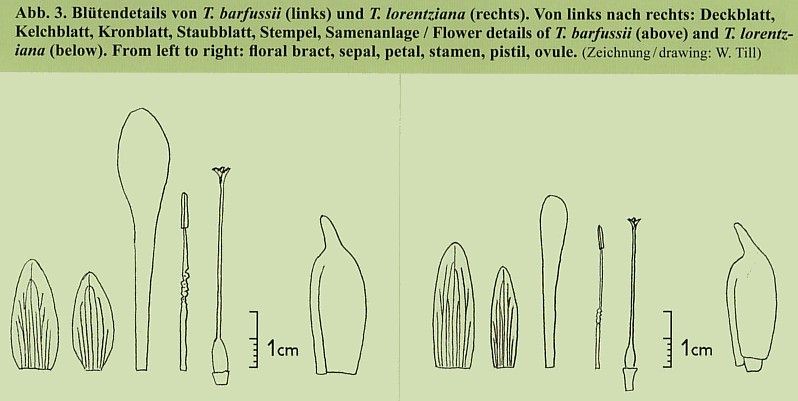
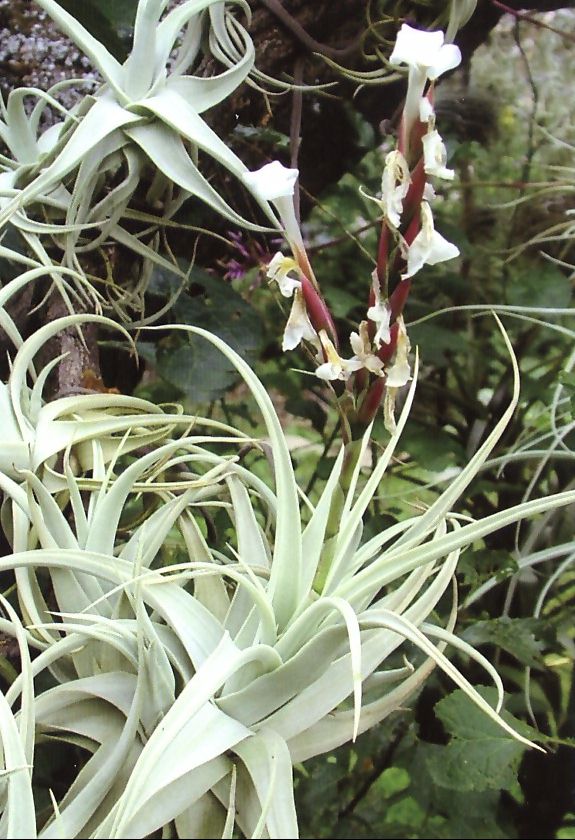
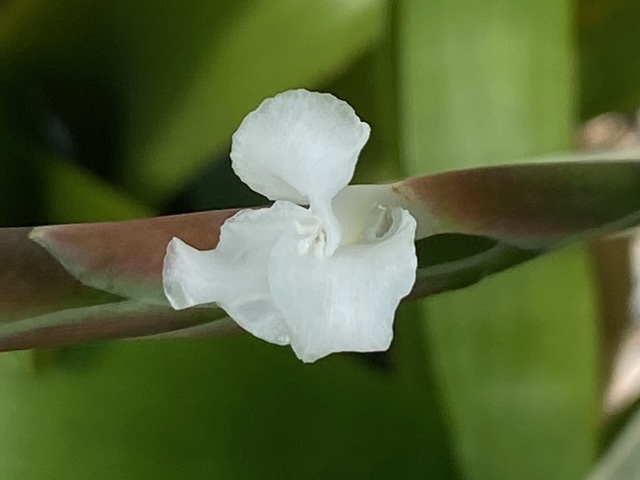
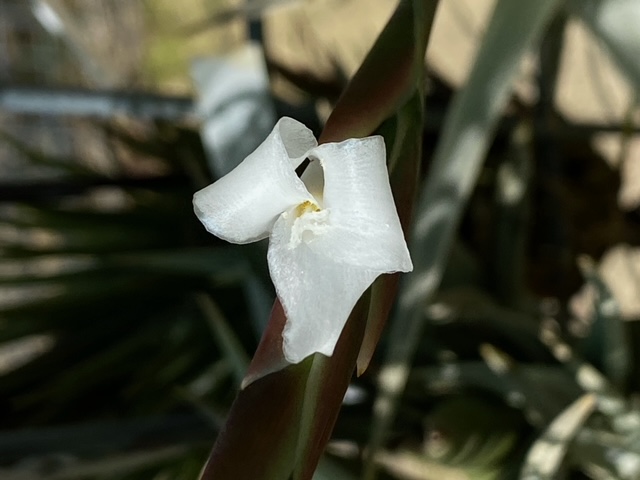
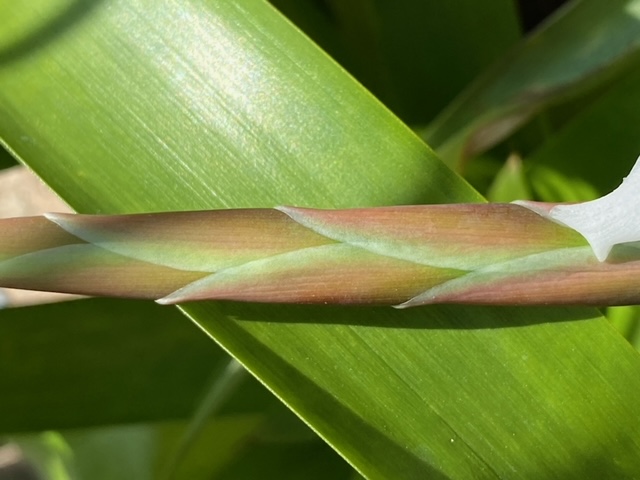
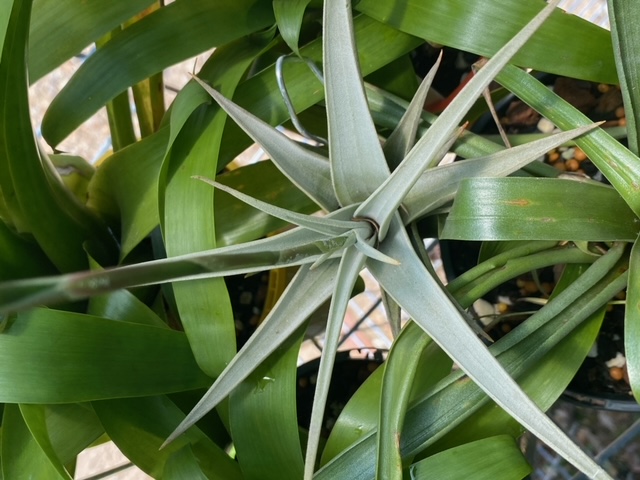
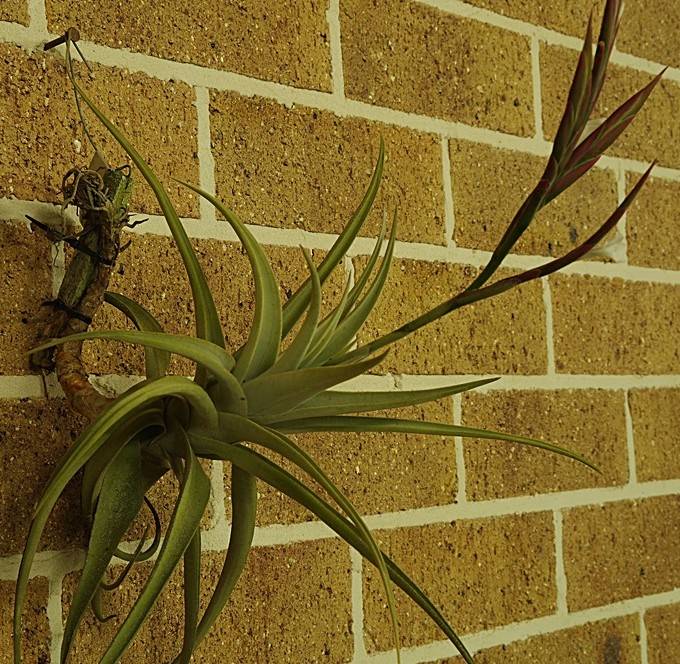
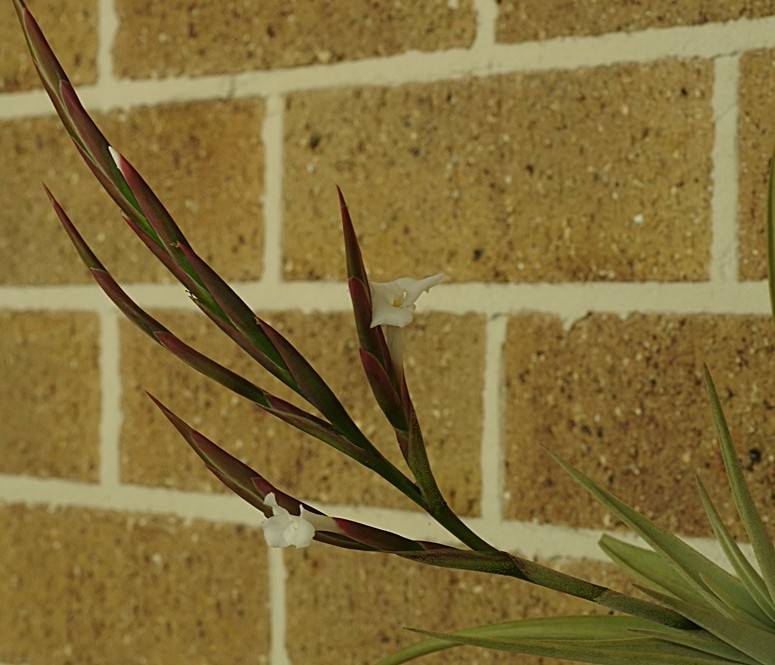
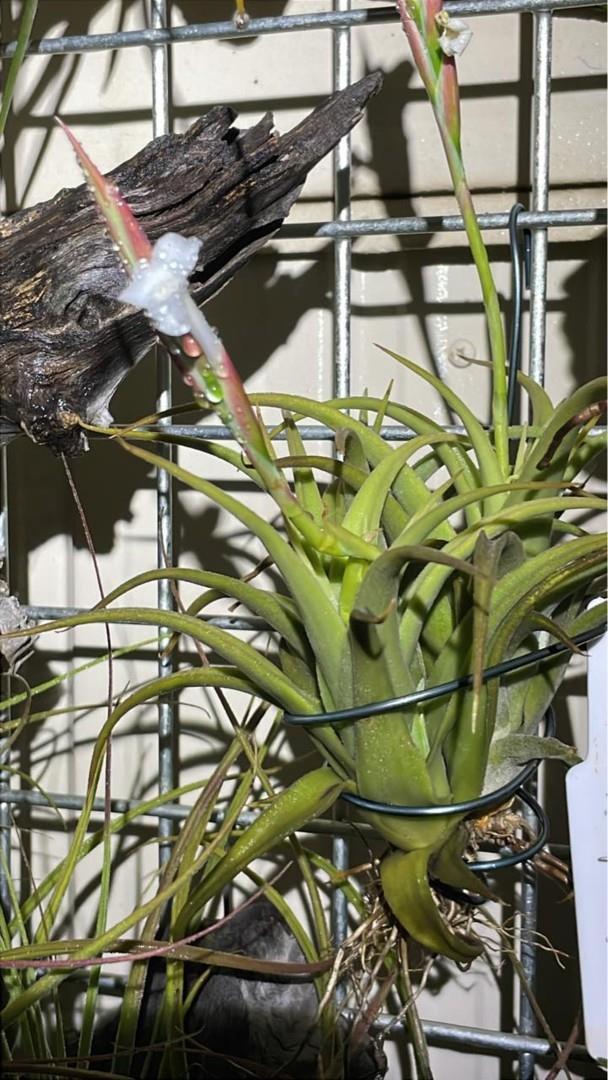
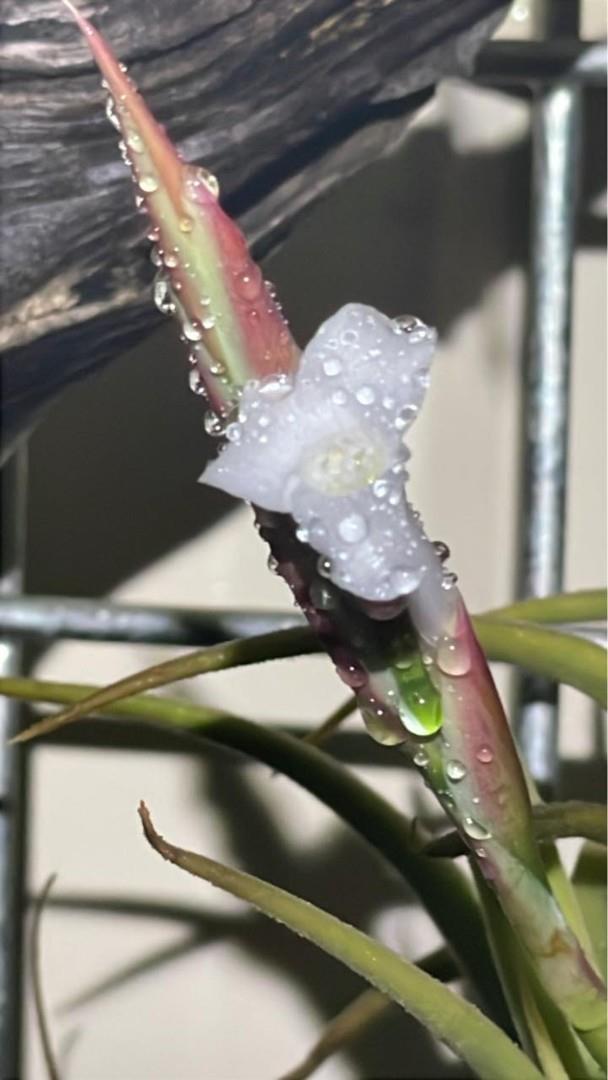
Plants stemless or at most very short stemmed, forming an upright to weakly secund rosette of ca. 20 leaves.
Leaves narrowly triangular, tapering into a subulate apex, 16-18 cm long, 2-2.4 cm wide at the base, the blade is not distinguished from the sheath, densely whitish grey lepidote on both surfaces, with a characteristic dull, not shining appearance.
Inflorescence upright;
peduncle slightly shorter or about as long as the rosette, (8-)10-15 cm long, 2-3 mm in diam. (without the peduncle bracts), glabrous, nearly completely covered by the peduncle bracts, these vaginiform, only the lowermost with a short blade, little longer than the inter-nodes, densely appressed lepidote, especially towards the apex, slightly nerved when dry;
fertile part of the inflorescence unbranched or composed of two spikes;
spikes upright, completely glabrous, the main spike 8.5 - 11 cm long, 11-14 m wide, the additional spike 5.5-8 cm long, 10-12 mm wide;
rachis slightly flexuous, somewhat alate.
Flowers ca. 2 mm stoutly pedicellate, without fragrance;
flower bracts 19-21 mm long, 4.5-5 mm wide (seen from the side), flattened ovate-lanceolate and 8 mm wide, obtuse, not keeled, slightly nerved when dry, in the fresh state dark green towards the base, flesh-red towards the apex, membranaceous at the margins;
sepals broadly lanceolate, ± obtuse, flattened 18 mm long, 7 mm wide, the abaxial one free, the two adaxial ones connate for 1 mm, hardly keeled in the fresh state, keeled in the lower half when dry;
petals oblanceolate, 47 mm long, the upper third forming a broadly oval, 9 mm wide plate, white;
filaments white, ribbon-shaped, plicate in the middle, inserted at the base of the anthers; anthers greenish, 7.3 mm long;
ovary ellipsoid, 6 mm long, 2.5 mm wide, pale green;
style 40 mm long, 1 mm wide, white;
stigma with 2.5 mm long spreading whitish lobes, of the “simple-erect” type according to Brown & Gilmartin (1984);
ovules oblong ovate, with a chalazal projection of 1/3 of the length of the ovule.
Fruit and seeds not seen.
Habitat and Distribution
According to own observations, the plants are growing in nature on perpendicular rocks together with a deviating form of T. vernicosa Baker and with T. didisticha (E. Morren) Baker. These two species usually grow as epiphytes, epilithic populations are rare and normally distinct. T. barfussii is known only from the mountainous part of Central Paraguay and seems to be endemic to this region.
Differences to Tillandsia lorentziana
Tillandsia barfussii differs from T. lorentziana Griseb. by its dull, light grey leaves, the outer leaves are not recurved, the floral bracts are two-coloured (at the base dark green, towards the apex reddish), the sepals are wider, the petals are distinctly longer and wider, the stamens and the ovary are longer and the anthers exhibit a greenish colour.
Notes
For many years a Tillandsia has been grown in central European collections. It is easily distinguished by its appressed, dull, grey indument, but the plants do not flower frequently. After many years a collection, made by the author in 1991, has come into bloom. Analysing the details of the inflorescence and flowers showed a relationship to Tillandsia lorentziana Griseb., the differences in the foliage and floral parts are, however, distinctive enough to propose the concerned plants as a new species. I am dedicating it to Mag. Michael H.J. Barfuss for his considerable contributions to the phylogeny of the Tillandsioideae.